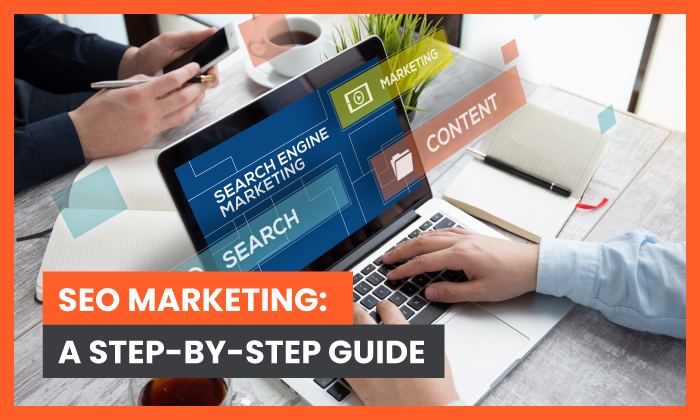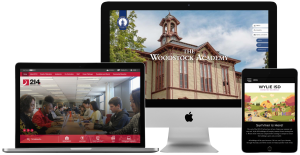There have never been more regular online users than ever before in the history of the Internet. While marketing is nowhere near a new concept, online marketing is comparatively new. The Internet is always changing, and marketing is always changing to keep up within the digital world and within Internet marketing is the world of SEO. It is now 20201, and there is no denying the world has changed after enduring 2020. Stagnation will lead to a slow death in the realm of SEO, so here are a few ways you can improve your SEO practices for 2021. For the best results, combine as many strategies as you can. Embrace the power of direct marketing while using link building and across the board optimization. With a combination of these ten suggestions, you will be ready for SEO in 2021.
Plan It Out
You can study the best SEO techniques all day and night, but all that knowledge will go to waste if you don’t have a proper plan of action. Think about where you currently are and where you want to be by the end of the first quarter, halfway through the year, and at the end of this year. Use metrics and information from 2020 to give you a starting point to build a plan around. A starting place snapshot could include customer data shown in correlation to your most popular pages. One of the significant benefits of online marketing is that there is always data to collect and analyze, so use those tools to create a plan before you start changing things and spending resources.
Optimization
For years desktop browsing was the only option, and as mobile entered the market, the two worlds stayed largely separate until recently. Mobile and desktop used to be almost two different worlds, but now that smartphones are stronger than the same desktops we used years ago, the two worlds are more overlapped than ever before. It is not enough to have an excellent desktop site if it is poorly optimized for mobile. Mobile browsing now makes up a significant portion of the online shopping and marketing network, so to ignore mobile or non-desktop optimization is to walk away from money.
Power of Video Marketing
Video marketing was well on its rise in 2020, and that trend will continue into 2021. Customers would rather see a video of a product or explaining something rather than read along with key pictures. Videos increase user engagement and also give the customer what they want in a more concise package. Note that wherever you host your video will affect its performance outside of your sites or custom embedded locations. YouTube famously changes its preferred video length for optimal algorithm results with little warning, while TikTok will always favor shorter content.
Keyword Research
If you have ever wondered what most people are searching for, keyword research is here to save the day. With keyword research tools, you can find what terms are most searched, what content customers want, and much more. You can learn so much valuable information from keyword research it is astounding companies survive without it. From learning about your audience and customer base to seeing how your brand is perceived through outside eyes and finding new topics for engaging content, there is almost nothing keyword research can’t show you.
Internal Links
Internal links are links within one page on your site that connects to another page. If you have covered a topic before or have a connected product, using internal links can help keep customers within your site rather than finding answers elsewhere. However, internal links also help your site rank better with search engines by giving your site credibility and visibility.
Evergreen Rather Than Filler
No one likes looking at empty space. If you have slots or empty space on your site’s blog, it is only natural to want to fill it. However, avoid the temptation to stuff that void with easy to write fluff articles that ultimately just take up the room without offering much in return. Quick fluff articles might fill the visual void, but they hinder your other articles by detracting from the overall value proposition to customers. Instead of pumping out fluff to fill holes, work on evergreen content that will always be of some use to customers and can comfortably sit in the bottom blog slots, so you never have any empty space. Evergreen content that is always relevant will not only fill out your pages, but it will also help your rankings over time and bring in a constant stream of traffic over time.
Clean Up Your Site
It can be easy to get caught up in always adding new things that you forget to clean up the old and no longer useful content. If an article is out of date, reflects a product you no longer make or is just generally not useful anymore, it is time to take it down. Leaving old content and useless content up might feel harmless, but it is dragging the rest of your site down. If old content can’t be made evergreen with some edits, it is time for that content to retire. Outdated information can confuse customers, old pages can get customers lost in a network of articles, and unvisited pages can affect your overall site impression.
Technical Performance
Many businesses will be quick to blame customer Internet connections if a site has terrible technical performance, but there are certain things website owners can do to make their site perform better. How quickly do pages load? Do images on a page affect your load times? How fast does the navigation menu react to a click? Are all your pages using HTTPS and other security measures to keep the site secure? Of course, your customer’s Internet connections will affect page performance, but there are things you can do too. If your sites suffer from long load times, consider adding dynamic loading, so the page loads as the customer scrolls. Take out some images on pages that struggle to load as images are often what bogs download orders. While load times and customer experience are not direct SEO metrics, improving your site’s functionality will lower your bounce rate and improve brand impressions.
Accidentally Hiding Critical Information
Most businesses do not set out to make finding some information an obtuse process, but it can accidentally end up that way. Think about what information a customer would want to find quickly and first. If a customer wants to contact your brand for support, that should be straightforward information to find. Do not hide your support information behind three menu clicks and a scroll. It may have made sense to categorize your information that way, but it is a maze to find what they want to a customer. Contact email and phone number along with business hours should be in the footer of every page and in an About Us or Contact section that is clearly labeled. Look at your site through a customer’s eyes and think about what you would want to find quickly. What makes sense to a UX designer might not translate to customers, so consider what information is accidentally hidden that could improve your customer experience and reduce page clutter for better SEO.
Be Willing To Change
The final SEO suggestion for 2021 is less of a literal task and more of a suggested state of mind. The online world moves and changes quickly. The suggestions for best practices today may change in a few months as new technology and algorithmic changes affect the industry. Clinging to old methods as the space changes will get you nowhere. To succeed at SEO in the future, you must be willing to change as is required. Listen to experts, stay on top of the news, and be ready to pivot if the need arises.




